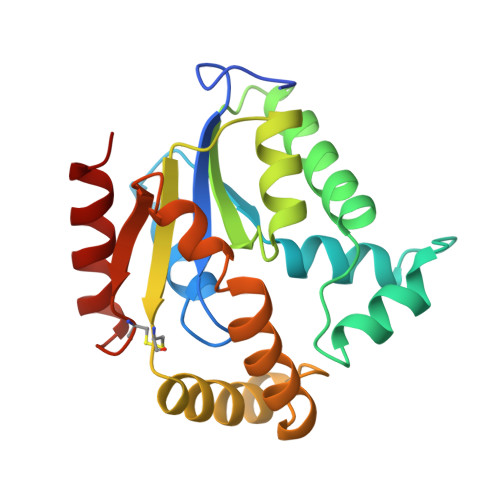Substrate specificity and assembly of the catalytic center derived from two structures of ligated uridylate kinase.
Muller-Dieckmann, H.J., Schulz, G.E.(1995) J Mol Biol 246: 522-530
- PubMed: 7877173
- DOI: https://doi.org/10.1006/jmbi.1994.0104
- Primary Citation of Related Structures:
1UKY, 1UKZ - PubMed Abstract:
Two crystal structures of ligated uridylate kinase from Saccharomyces cerevisiae were determined by X-ray analyses. The ligands were ADP and AMP. Cocrystallization with ATP yielded crystals with ADP at the ATP site and a mixture of AMP and ADP at the NMP site. Cocrystallization with ADP gave rise to a distinct crystal type with ADP at the ATP site, but only AMP at the NMP site. In both cases, the substrates are kept in place by favorable crystal contacts. The structures have been refined to R-factors of 17.8% and 19.6% at resolutions of 2.1 A and 1.9 A, respectively. A comparison with the related cytosolic adenylate kinase from pig disclosed large induced-fit movements on substrate binding and the disassembly of the catalytic center in the absence of substrates. The relatively high side-activity of uridylate kinase for AMP is explained by the finding that the binding pocket is sized for an AMP, but constructed to bind UMP together with a water molecule.
Organizational Affiliation:
Institut für Organische, Chemie und Biochemie, Albert-Ludwigs-Universität, Freiburg im Breisgau, Germany.















